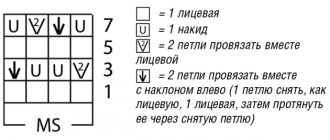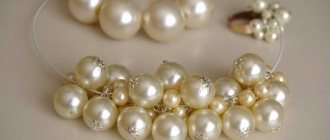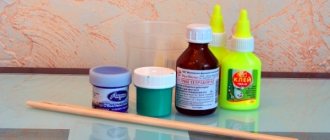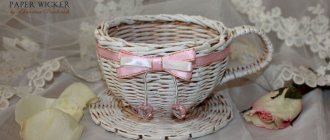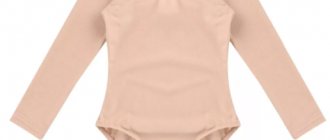How to starch crocheted snowflakes, collar, or basket? You can give them rigidity with PVA glue, or you can use the method proven by our grandmothers, which to this day has not lost its relevance - starch. Remember in our grandmothers’ house, crocheted napkins and tablecloths, ironed and folded in a neat pile in the closet, snow-white, like swan wings? Do you want to know how such an unsurpassed result was achieved? Read our article. And if you don’t like to read, at the end you will find a video where they will not only talk about the process, but also show you what and how to do.
To make napkins, cotton threads are used, which may contain admixtures of lurex, silk or viscose. Naturally, soft fibers are deformed during use. And if we are talking about openwork products, they cannot hold their shape at all without additional processing, namely starching. The result will be as follows:
- the fibers will become denser;
- light-colored items will become snow-white;
- a kind of barrier is formed that does not allow contamination to penetrate deep into the fibers.
Why starch a napkin?
After treatment with a starch composition, a thin invisible film forms on the surface, which:
- makes the fabric tougher;
- protects the product from contamination;
- bleaches fibers.
If you starch a crocheted napkin, it will wrinkle less, and the dirt that gets on it will dissolve when washed along with the starch layer. The processed products differ favorably from ordinary ones: the color becomes brighter, the yarn fibers adhere more tightly to each other. Also, using starch, you can give napkins various shapes, turning them, for example, into openwork plates or flowers.
Housewives most often use potato starch to starch a napkin.
To starch a napkin, housewives most often use potato starch, which is not expensive at all, is economical and gives things extra whiteness. Rice and corn analogues thicken worse and can give products a yellow tint.
The importance of using starch
To knit napkins, you can use yarn of different thicknesses and compositions. The most popular are threads with the addition of viscose, silk and lurex. Not only the appearance, but also the density and texture of the thing depends on them.
Even if the thread is evenly tightened, the product becomes slightly deformed and loses its shape as a result of use. Regular washing without additional fastening can only aggravate the situation, because the threads can stretch or tighten under the influence of high temperature.
With openwork weaving, it is impossible to maintain the shape without additional processing. A starched item is covered with an invisible film on the outside, which affects the shape. Thanks to starching, a number of positive changes occur:
- the product becomes dense and elastic even after repeated use;
- a whitening effect occurs;
- threads get dirty less due to the surface being protected by a film of starch.
If napkins are made of synthetic, silk threads or wool yarn, then they should not be starched so as not to disturb the texture of the threads. Wool and synthetic yarns do not react to starch. Needlewomen do not recommend using powder for working with dark items, as the threads may become stained. You need to starch a crocheted napkin so that the product does not lose its softness and retains its beautiful shape.
Recipe with starch
For the procedure, you will need a paste of water with starch, in which you should hold a napkin so that the threads are saturated with liquid and a film forms on their surface. The cost of starch is low, it gives the necessary thick consistency and has a whitening effect.
Potato starch is most commonly used, but corn or rice powder may also work. A paste made from corn and rice starch will have a lower viscosity, so you can change its consistency by adding more product to the water. The hardness of the product depends on what type of mixture was used:
- Soft. Add 1 teaspoon of starch to 1 liter of water. Gives elasticity to napkins and tablecloths, but does not make them too dense.
- Average. 1 large spoon of starch is diluted in 1 liter of water. Suitable for starching items, collars, cuffs.
- Hard. Add 2 large tablespoons of starch to 1 liter of water. The resulting mixture not only gives a clear shape and hardness, but also forms a protective film on the surface that prevents the absorption of dust and dirt. Suitable for creating openwork vases, candy bowls, flowers, plates, and individual motifs.
The process of forming a paste for work is the same for all types of products. The required amount of starch is diluted in a glass of cold water until a homogeneous mass is obtained, then the liquid is poured into boiling water in a thin stream and stirred constantly. If you add starch directly to warm or hot water, lumps of undissolved powder will form on the surface.
The result should be a consistency reminiscent of sour cream. The mixture should be cooled to a temperature of 30-35 °C, then used for starching.
If other components are found in the powder that can affect the color of the product, you must first filter them using water. After three or four procedures of draining the dirty liquid, the product will become clean and can be used for work. The starching process is simple:
- Pour the paste into a bowl so that it is convenient to place the napkin.
- Dip the product into the solution and leave for a few minutes so that the threads are saturated.
- For thin yarn you need to wait from 5 to 7 minutes, for medium yarn - 10, thick yarn will be saturated in approximately 15 minutes.
- Draw out the liquid from the napkin, squeeze it slightly so that the water does not flow, but the remaining liquid is inside the threads.
To prevent the product from losing its shape, it is necessary to straighten it on a flat surface and secure the edges with pins. There is no need to stretch the openwork knitting, because after drying the item may lose its appearance. A slightly damp product should be ironed with a hot iron through a cotton cloth so as not to compress the threads.
Real gloss
Using starch you can give the product a beautiful shine. To do this, you can use two recipes. In the first case the following applies:
- rice or wheat starch - 5 tablespoons;
- 3 spoons of talc;
- 1 spoon of borax (the component can be bought at the pharmacy);
- cold water.
When using borax powder, you need to be careful not to get any of the particles into your eyes or upper respiratory tract. It is recommended to use a mask and wear gloves. The skin may also be affected by the chemical.
For the second recipe you will need:
- 10 tablespoons of borax;
- 2 tablespoons of boric acid;
- 8-9 tablespoons of rice starch.
If you need to make a denser solution, then the amount of starch can be increased by two tablespoons.
Mix all ingredients and add a little water. The result should be a creamy consistency. Moisten a brush in the solution and apply a little mixture to the surface of the product, then spread it evenly. After processing, the napkin must be ironed with a hot iron through gauze. If this is not done, the item will become covered with tubercles from starch. In this way, you can process not only the entire napkin, but also its individual parts.
If you don’t have time to prepare the mixture, you can use the dry method. To do this, sprinkle starch on the surface of the napkin and spray water from a spray bottle. Then cover the napkin with a white sheet and iron it well until completely dry. The disadvantage of this method is that its effect will be short-lived.
Preparation of the product and starch solution
The yarn from which napkins are made can have a varied composition. It must be remembered that you should not starch products made of wool and silk, as well as those that are entirely made of synthetic fibers. Cotton threads work best with starch.
Cotton threads work best with starch
Before starching a knitted napkin, you need to make sure it is clean and wash it if necessary. If this is not done, contaminants can penetrate deeply into the fibers when ironed, and in the future it will be very difficult to wash them.
Starch fixes fabric fibers, so it can be used to give things different degrees of rigidity depending on their purpose. For example, for curtains or tablecloths, light fixation . In this case, the motionless folds of the fabric will look at least unnatural. If you need to create a three-dimensional figure from a napkin and fix it, then prepare the most concentrated solution . Products that are laid out on furniture surfaces are usually treated with a medium-holding agent.
After the required hardness of the product has been selected, you can prepare a paste (starch milk) using the appropriate proportions, see table.
| Rigidity | Amount of starch per 1 liter of water |
| Weak | 1 tsp. |
| Average | 1 tbsp. l. |
| Strong | 2 tbsp. l. |
It is very important that there are no lumps in the paste. Therefore, the powder is first diluted in a small amount of water, stirring until smooth. Then pour the remaining volume of liquid into it, first bringing it to a boil. Boiling water should be added in a thin stream, constantly stirring the solution. The resulting paste should resemble liquid sour cream in consistency.
It is important that there are no lumps in the starch paste (water + starch). Therefore, the powder is first diluted in a small amount of water, stirring until smooth.
Traditional recipe with starch
The answer to the question of how to starch a crocheted napkin is simple - you need to prepare a paste from water and starch and hold the product in it. Potato processing product is usually used as a raw material. It is inexpensive, gives the solution a thick consistency, and also has a whitening effect. But you can also use starch from rice or corn. It is worth considering that they have a lower viscosity, so more of them are required.
The final hardness of the product depends on the concentration of the starch solution. Main methods:
- Soft. Water – 1 liter, starch – 1 small spoon. Used to add elasticity to napkins, the ends of which should hang down, knitted tablecloths, and curtains.
- Average. Water – 1 liter, starch – 1 large spoon. It is used if the problem arises, how to starch lace, openwork collar, cuffs, napkins.
- Hard. Water – 1 liter, starch – 2 large spoons. Allows you to give the product hardness and a clear shape. Suitable for small items, individual parts, vases, plates, flowers and other crafts created using openwork knitting.
The process of creating a solution and starching napkins is the same for all methods.
Stages of preparing the paste:
- Dilute starch with cold water (a small amount). Mix thoroughly so that there are no lumps. If they appear, filter the solution. Its texture should resemble liquid sour cream.
- Boil the rest of the water. Pour starch into it in a thin stream. Stirring constantly, bring the liquid to a boil.
- Turn off the fire. Leave the paste to cool to 30-35°.
Important: If the starch has foreign impurities, it is necessary to fill it with water without heating, mix and let stand for a while. Then you should drain the dirty water. The steps must be repeated until the substance becomes pure.
Let's look at how to starch a knitted napkin so that it takes on a beautiful shape. Algorithm of actions:
- Pour the cooled paste into a bowl.
- Dip a clean and bleached napkin into it so that the threads are completely saturated.
- Wait a while. It is selected depending on the type and thickness of the fibers. Thin threads - 5-7, medium - 10, thick - 15 minutes.
- Pull the napkin out of the paste. Squeeze lightly.
Treating napkins with starch
To starch a napkin, you need to dip it (it is better that the product is wet) in the prepared solution for 10-15 minutes. During this time, the fabric is periodically turned over so that it is saturated with starch on all sides.
There is no need to rinse the product in clean water. The napkin is removed from the liquid, lightly wrung out and laid out on a flat surface, securing the ends with pins. Under no circumstances should items be hung to dry after treatment with starch, as the product will take on an irregular shape.
You cannot hang a napkin after treating it with starch, as the product will become deformed.
There is no need to wait until the napkin is completely dry. It is better to iron it with an iron in a slightly damp state, and in order not to damage the sole of the device, it is better to first cover the napkin with gauze. The iron temperature should be medium.
Creating three-dimensional products has its secrets. For example, in order to make a plate out of a napkin, you need to lay it out to dry on the outside of a bowl of suitable size, after covering it with cling film.
There is another way to use starch, the so-called “dry” method . In this case, no paste preparation is required. The napkin is laid out on a clean sheet of paper, and generously sprinkled with starch on top. Then water is sprayed onto the product using a spray bottle and covered with another sheet. After this, the napkin is ironed through the paper with a warm iron and left for several hours until completely dry. The procedure must be repeated, turning the product over to the other side.
If you starch a napkin using the “dry” method, the effect will last less than with the traditional processing method.
Tips for drying and ironing
After the napkin is saturated with the working solution (starch, glue, gelatin, etc.), it must be carefully placed on a flat surface. To do this, you can use an ironing board, first covering it with a soft towel. If an adhesive composition was used to give the shape, then the material must be additionally covered with polyethylene.
To prevent the knitted product from falling off, it is recommended to securely fix its edges with needles or pins. In addition, this will prevent the napkin from deforming during drying. The ornaments of the product should be straightened out immediately and also secured while it is still wet. If there is fringe on the napkin, it is advisable to carefully comb it and lay it evenly.
You need to dry the starched product not in the open sun, but in a well-ventilated area. A slightly wet napkin should be ironed with a warm iron, placing 2-3 layers of gauze on it. It is necessary to iron the item quickly, but as carefully as possible, otherwise its edges will wrinkle and they will have to be additionally moistened. If the iron is too hot, the threads of the product will turn yellow and become less attractive.
If you need to make a decorative plate or vase from a knitted item, you should use a base in the form of a bottle, mug or bowl to give the shape. To begin with, the object is wrapped in a piece of polyethylene. Then you need to pull a moistened and starched napkin over it. After this, the product must be left to dry. This process lasts about a day.
Interior elements made from knitted napkins are an excellent decoration. When making such things, craftswomen spend a lot of effort and time. Starching is an important final stage. With its help, a textile item can be given attractiveness and the desired shape. After washing, the item requires re-starching.
Other methods
You can properly starch a napkin at home using not only starch, but also sugar, PVA glue and gelatin. To give additional properties to the finished product, milk, salt, borax or talc are added to the processing solution.
Starch based methods
give the product a glossy shine by adding a little salt to the paste. This must be done while the solution is hot, then thoroughly stir the mixture until completely dissolved.
To starch a napkin and make it glossy rather than matte , use milk in combination with rice starch. The paste is prepared using conventional technology, but not with water, but with milk with a small percentage of fat content. First, starch is diluted in a small amount, and then diluted with the rest, brought to a boil. Fabric fibers increase in volume after this treatment.
Sugar makes the fixation of starched products especially strong . First of all, prepare sugar syrup at the rate of 3 tbsp. l. sugar per 1 glass of water. Starch is also diluted in 1 glass of water. The remaining water is brought to a boil and sugar and starch syrups are added to it in thin streams and cooled. If you starch a napkin using sugar, it can make it attractive to flies and other insects, so it is better to use such products in the cold season.
If you starch a napkin with a solution containing talc and borax, it will become glossy . The recipe is: 5 tbsp. l. rice starch is mixed with 3 tbsp. l. talc and 1 tbsp. l. borax powder. The resulting mixture is diluted with water to obtain a homogeneous slurry. There is no need to soak the product in such a solution; it is applied to the fabric with a brush and immediately ironed using several layers of gauze.
Methods without starch
Alternatives to starch are PVA glue and gelatin . Sugar can also be used as an independent means to stiffen products.
To impart rigidity to knitted items, in addition to starch, use PVA glue, gelatin or sugar
Starching a napkin with PVA glue is not at all difficult, you just need to remember that such products should not then come into contact with food. The glue is diluted with water in a ratio of 1:1 and the item is immersed in it for 10 minutes. After the napkin dries, it will acquire a very rigid hold.
The advantages of gelatin are that it does not fall off from the treated fabric. Preliminarily 1 tbsp. l. gelatin is soaked in 100 ml of warm water and then stirred until completely dissolved. If the grains do not completely disperse, the liquid needs to be heated slightly in a water bath, and then add another 200 ml of water and bring to a boil. A napkin is soaked in the resulting solution, and the result is a flexible fixation.
Crochet openwork napkins (tablecloths, coasters, snowflakes, toys, hats, collars), starch them and enjoy the result
Starching a crocheted napkin at home is not at all difficult. The efforts made will be justified when the openwork products will please the eye and create unique comfort in the house.
Alternative methods
Don't think it's impossible to starch a colored crocheted napkin. Of course, starch will not work, because white streaks may appear on the product. Therefore, you will have to resort to the alternative methods described in the table.
Table - Ways to starch a napkin without starch
| Means | Compound | Instructions | How to use | Note |
| Sugar | - 3 glasses of sugar; - 300 ml water | — Connect the components; - heat until sugar dissolves | — Soak the product in the composition for 3-5 minutes | — The processed item can become a delicacy for insects |
| PVA glue | - Glue; - equal amount of water | - Stir until smooth | — Soak a napkin and cover with film | — Helps to starch products until they become stiff |
| Gelatin | - A tablespoon of gelatin; - half a glass of water | — Connect the components; - after 10 minutes, melt the swollen gelatin in a water bath | — Impregnate the product with the composition | — Does not crumble, suitable for bulky items |
If you are looking for a way to heavily starch a fabric napkin, PVA glue is your best bet. It will clearly fix the shape of the product and will not spoil the color. However, this starching method is not suitable for products in contact with skin or food.


